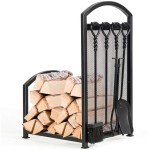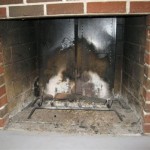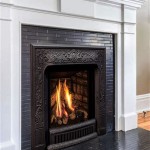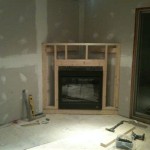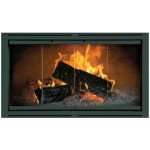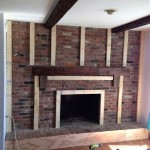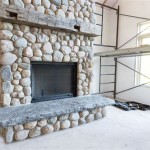Essential Aspects of Choosing a Fake Brick Interior for Your Fireplace
Transforming your fireplace with a fake brick interior offers an array of aesthetic and practical benefits. However, selecting the right product is crucial to ensure a realistic and durable result. Here are the key aspects to consider when choosing a fake brick interior for your fireplace:
1. Material Options
Fake brick interiors are primarily crafted from two materials: polyurethane and refractory cement.
Polyurethane: Lightweight and easy to install, polyurethane bricks replicate the look and texture of real brick without the heavy weight. They are fire-resistant but not as durable as refractory cement.
Refractory Cement: Composed of a heat-resistant cement mixture, refractory brick interiors provide superior durability and heat resistance. However, they are heavier and more challenging to install.
2. Brick Size and Style
Brick interiors come in a variety of sizes and styles to match the aesthetic of your fireplace and décor. Consider the scale and proportions of your fireplace opening when selecting the brick size.
Common brick styles include standard bricks, reclaimed bricks, and thin bricks with varying textures, colors, and appearances.
3. Fire Resistance
Ensure that the fake brick interior you choose is fire-resistant to maintain safety around your fireplace. Polyurethane bricks typically meet this requirement, while refractory cement interiors provide exceptional fire resistance.
4. Installation Considerations
The complexity of installing a fake brick interior depends on the material and size of the bricks. Polyurethane bricks can be easily cut and glued in place, making them suitable for DIY enthusiasts.
Refractory cement interiors, on the other hand, require skilled labor for professional installation due to their weight and heat-resistant properties.
5. Cost and Longevity
The cost of fake brick interiors varies depending on the material, size, and style. Typically, polyurethane bricks are more affordable than refractory cement interiors.
In terms of longevity, refractory cement interiors offer better durability and can withstand higher temperatures, making them a long-term investment.
6. Maintenance and Cleaning
Fake brick interiors require minimal maintenance. Polyurethane bricks can be cleaned with a damp cloth or mild detergent.
Refractory cement interiors may require occasional touch-ups to repair minor chips or cracks, but they generally have a longer lifespan.
Conclusion
Choosing a fake brick interior for your fireplace is a decision that requires careful consideration of material, size, style, fire resistance, installation requirements, and cost. By understanding these essential aspects, you can select the best product to enhance the aesthetics and functionality of your fireplace for many years to come.

If You Re Going To Make It Better Fake Diy Brick Fireplace

If You Re Going To Make It Better Fake Diy Brick Fireplace

If You Re Going To Make It Better Fake Diy Brick Fireplace

Building An Electric Fireplace With Brick Facade

How To Diy Faux Brick Fireplace Shiplap The Simple Cozy Haven

Diy Faux Fireplace For Under 600 The Big Reveal Bless Er House

40 Brick Fireplace Ideas Captivating Showstoppers With Timeless Charm Makeover Red Fireplaces White Wash

How To Build A Faux Fireplace With Storage Addicted 2 Diy

The Top 3 Benefits Of A Faux Brick Fireplace Makeover Genstone

Brick Boards Heat Resistant Insulating Panels Made From Real Slips
Related Posts

